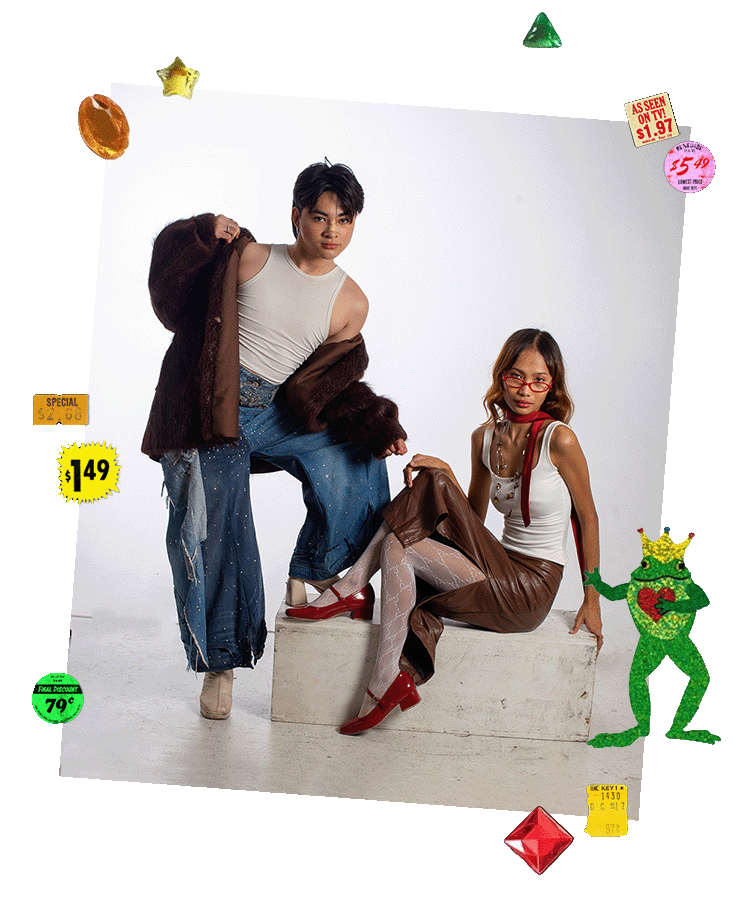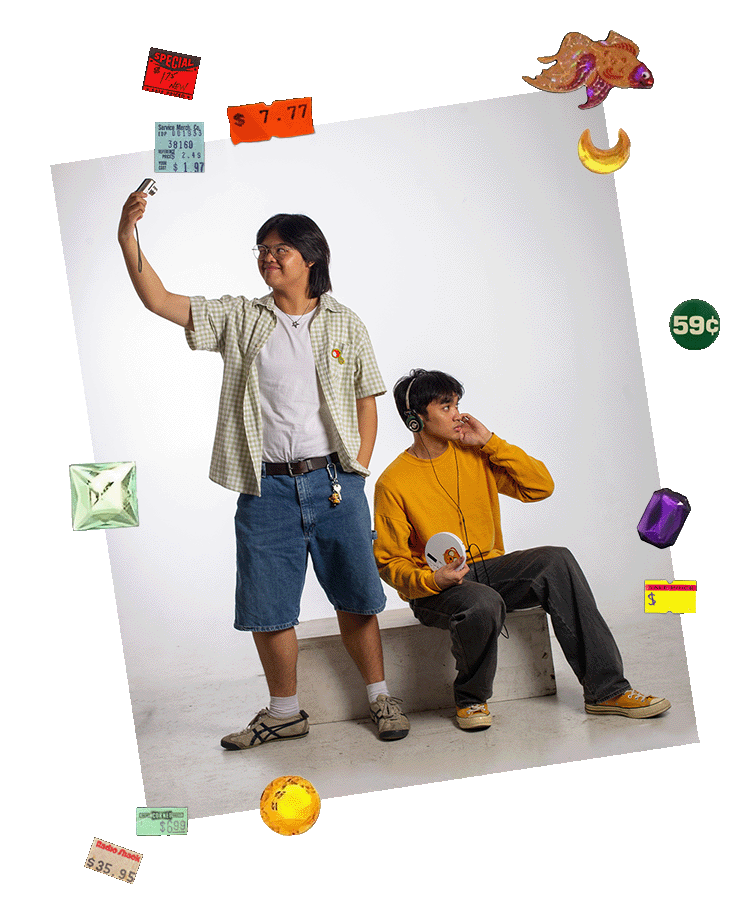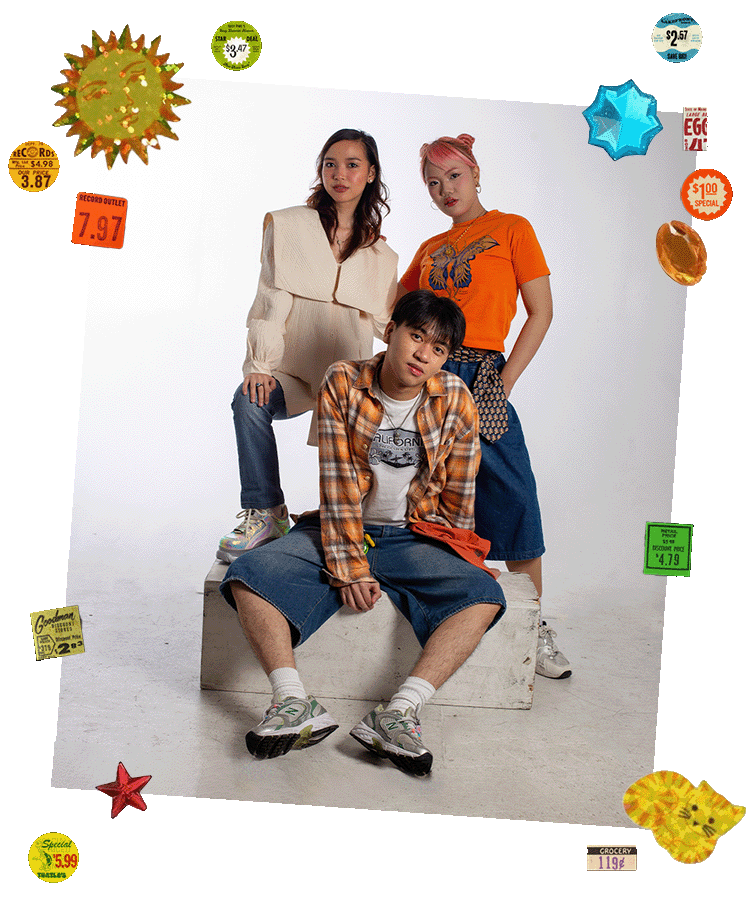Why do
Trends Resurface?
Digicams, baggy jeans, chunky sneakers and more! Do these trendy items leave a somewhat nostalgic impression? Well, these items already trended decades ago, which may leave you wondering why these trends return and regain such popularity. There’s a lot that goes behind why trends resurface, exploring themes of human psychology, culture, and the cyclical nature of history. In this essay, we will dive into the phenomenon of resurfacing trends and why they attract the public eye.
Nostalgia
One of the strongest forces behind trend repitition is nostalgia. Trends aren’t just about the item–it’s about feelings, memories, and identity. For people who lived through a particular era such as the 90s or early 2000s, seeing those trends return brings back memories from their youth, giving them a sense of comfort and familiarity. For younger generations who didn’t live through those times, participating in these trends feels “new” and exciting–like they’re discovering a hidden gem. Nostalgia also taps into the idea that “the past was better,” especially during times of uncertainty. This emotional pull makes past trends very appealing.


Reinvention
While society is ever-evovling, completely new ideas are rare. Instead, people often reimagine or remix older trends, putting a fresh spin on something familiar. With fashion being a vital participant in trends, designers always finds ways to reinvent already existing clothing. They might change the materials, update the cut, or blend two past styles into something entirely unique, The same goes for technology where inventors create new innovations using new technology while staying true to the old and recognizable aesthetics. This reinvention allows trends to stay relevant. A trend might have disappeared years ago, but when it’s reintroduced in a new context, in feels exciting again.
Culture
Trends are deeply connected to what’s happening in the world. The return of certain trends often reflects larger societal changes or values. When a society experiences economic hardship, minimalisr or “make do and mend” aesthetics may become more popular. During periods of cultural revival or political change, styles from specific historical periods might resurface as a form of symbolism or expression. Moreover, trends foster a sense of community and camaraderie among people who share similar interests or preferences.


Trends repeat because we are drawn to them. We crave emotional connection, we’re inspired by the past, and we respond to what’s happening in the world around us. These elements work together to make trends a loop rather than a straight line–constantly revisiting, reinventing, and reflecting the past in new ways.
Why do
Trends Resurface?
Digicams, baggy jeans, chunky sneakers and more! Do these trendy items leave a somewhat nostalgic impression? Well, these items already trended decades ago, which may leave you wondering why these trends return and regain such popularity. There’s a lot that goes behind why trends resurface, exploring themes of human psychology, culture, and the cyclical nature of history. In this essay, we will dive into the phenomenon of resurfacing trends and why they attract the public eye.

Nostalgia
One of the strongest forces behind trend repitition is nostalgia. Trends aren’t just about the item–it’s about feelings, memories, and identity. For people who lived through a particular era such as the 90s or early 2000s, seeing those trends return brings back memories from their youth, giving them a sense of comfort and familiarity. For younger generations who didn’t live through those times, participating in these trends feels “new” and exciting–like they’re discovering a hidden gem. Nostalgia also taps into the idea that “the past was better,” especially during times of uncertainty. This emotional pull makes past trends very appealing.

Reinvention
While society is ever-evovling, completely new ideas are rare. Instead, people often reimagine or remix older trends, putting a fresh spin on something familiar. With fashion being a vital participant in trends, designers always finds ways to reinvent already existing clothing. They might change the materials, update the cut, or blend two past styles into something entirely unique, The same goes for technology where inventors create new innovations using new technology while staying true to the old and recognizable aesthetics. This reinvention allows trends to stay relevant. A trend might have disappeared years ago, but when it’s reintroduced in a new context, in feels exciting again.

Culture
Trends are deeply connected to what’s happening in the world. The return of certain trends often reflects larger societal changes or values. When a society experiences economic hardship, minimalisr or “make do and mend” aesthetics may become more popular. During periods of cultural revival or political change, styles from specific historical periods might resurface as a form of symbolism or expression. Moreover, trends foster a sense of community and camaraderie among people who share similar interests or preferences.

Trends repeat because we are drawn to them. We crave emotional connection, we’re inspired by the past, and we respond to what’s happening in the world around us. These elements work together to make trends a loop rather than a straight line–constantly revisiting, reinventing, and reflecting the past in new ways.